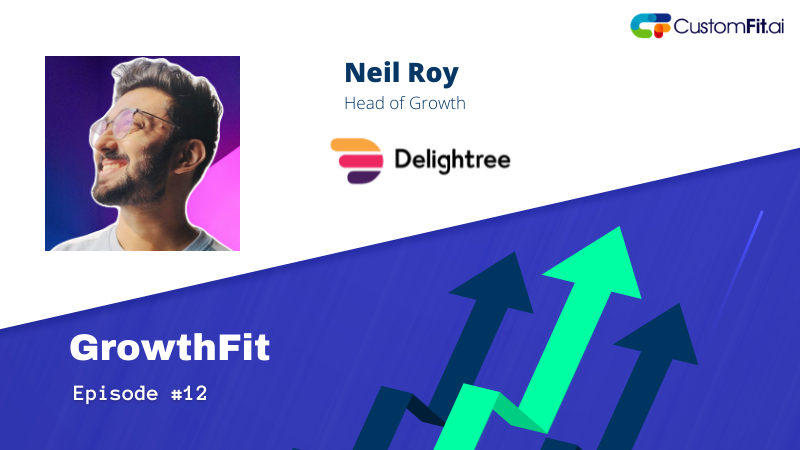Ongoing and automated feedback loops is the secret of optimizing results: Neil Roy
Stay tuned for a lot of meat if you are a hungry marketer.
- How to design your marketing automation?
- How do you automate the website content production process?
- What metrics matter to marketers?
- How do you know which product features have * worked and which have not?
- How to create a funnel for a channel?
Neil Roy walked into digital marketing with serendipity in 2013. He loves design. His first company was BlazeClan where they were helping clients with AWS. He started there as a design intern. Then, took up other work concerned with organic marketing like blogs, SEO, and so on.
Later, he moved to the paid side of digital which was in Sokrati, later acquired by Merkel, a paid marketing company. This job entailed working with Google ads and other ad platforms where the spend touched Rs.2 crores. This initial foundation gave a great understanding of paid and organic marketing.
His next stint with UpGrad, an e-learning company included six months of end-to-end product creation and marketing. It involved overseeing content production, marketing the program, and managing the P&L. That pushed him to dabble with a lot of product marketing tasks and provided industry exposure. This was when he got introduced to a lot of opportunities with SaaS.
Then, Neil moved to FusionCharts and headed marketing which was around converting footprints into customers. Here is when he also explored developer marketing which he recollects to say that, Developers are a no-bullshit persona and marketing to them is very difficult.
He further moved to the logistics domain and then to Hevo where we did a lot of data work which included sales, pre-sales and so on. Then, moved to his current company called Delightree, heading the growth.
The importance of Automation in Marketing
Neil: There are so many tools that help a marketer in automating processes like downloading, mails are going, CRMs, personalization, etc. This way tasks are already automated. Beyond that, I believe, marketers need to look at how they can not just automate the tasks but their day-to-day life itself. For example, if you are a product marketer or a marketer in a small team, then you end up doing a lot of designing on your own. In case, if you can automate the process of choosing and going live of your designs, your experiments can become really fast. This is what I mean by increasing automation in marketing.
Website content automation
Neil: Over the years, I have done lots of revamping and repurposing, I have realized sometimes we stop questioning the basic principles. It should not be about filling in the right space but understanding demand. Plan with the corner stones of the content while keeping in mind the demand of the audience.
Follow hub and spoke model. Understand what is the intent of various searches, how can I produce relevant content for my audience.
With channels, the content format changes. So, planning through all these aspects ahead of time helps you create a lot of seamless process automation. Build your core content hub and see how it works and how it ranks.
“Everything needs to be reverse-engineered and then plan about your content.”You get the most value of a piece of content only when you plan it with respect to demand and the channel where it will be displayed. Gradually, set up a pattern for measuring the results and optimize the process.
Metrics that matter to marketers
Neil: I think it's important to look at subjective data as much as objective data. For example, heat maps and journey maps. I used to go through recordings of 200 plus people and figured out a pattern of these behaviors. I analyzed these data points. Thereafter we put an event tracker and reached our conclusion.

